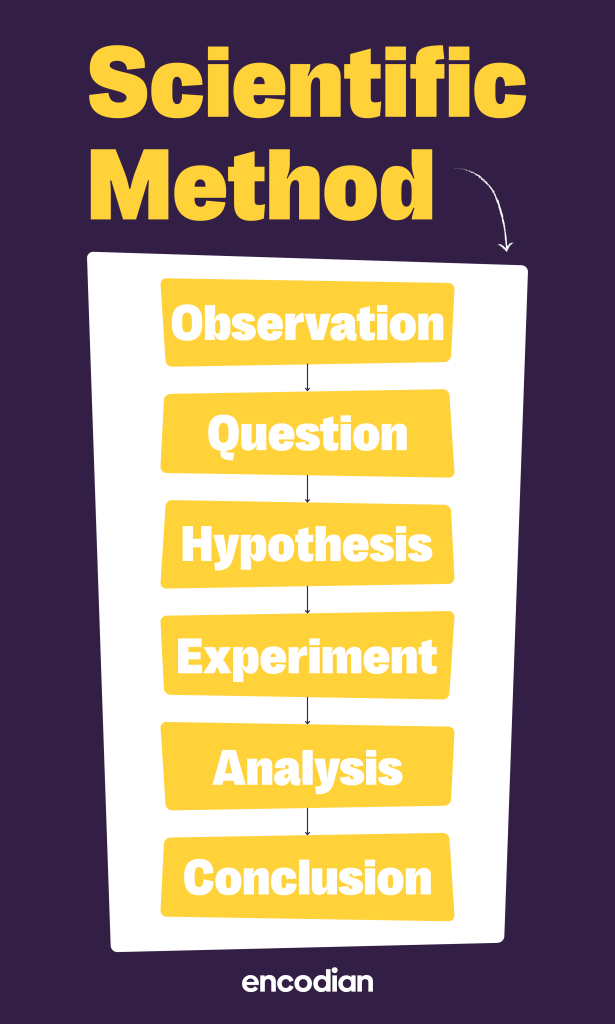Have you ever wondered how businesses can make their processes more efficient? What if you could automate some currently manual tasks, freeing up your employees to do more value-added work? Power Automate is a complete software as a service (SaaS) platform that provides an easy-to-use interface to create and run automated processes. But… we’re assuming you already know that.
Whether you’re new to Power Automate or highly experienced, there might be a point when you have no clue where to start. For us, we find experimenting can be a significant first step. The best way to begin your experiment is by first knowing about the scientific method.
What’s the scientific method
The scientific method is a great technique when trying to learn something new, like how to automate those tricky workflows. It’s a process of learning about the world around us. It involves making observations and asking questions, testing possible answers to those questions by performing experiments and then analysing the results. The scientific method aims to help us understand how things work—and why they sometimes don’t.

Getting started…
Before starting automating, you must look at your manual processes and understand how they work. Is your finance team spending too much time downloading attached invoices from emails, or is it wasting time reading those invoices and inputting that data into a different system?
There will always be processes that can be automated, so first things first, work out what you could automate.
What do you want to do?
As you start brainstorming your experiment, you should determine the question you want to answer.
- Make sure the question is specific and clear. For example, can I save more time by automatically extracting data from PDF invoices or automating attachment downloads?
- Ask yourself if the question is answerable by collecting data through automation and analysis.
- Think about whether it’s realistic to use Power Automate to solve the problem in a timeframe that interests you. If not, then maybe Power Automate isn’t the best place to start, and instead, you need to re-evaluate your manual processes or goals.
What do you think will happen?
To get the most out of your experiment, you should begin by defining the problem you’re trying to solve. What do you want to achieve? Think carefully about this before starting on a solution, and make sure it’s something that will motivate you. Saving time for your finance department by automating the invoice process is a straightforward goal that could start to spiral, so be sure to keep your goals narrow.
Make sure that your goals are actionable—and then act! Don’t worry about other people’s goals; they don’t matter unless they’re helping you reach yours. Be ambitious but realistic: setting lofty goals can feel good now but ultimately disappoints everyone involved.
What are you going to change?
Experiment variables are the input values you want to change in your experiment; they are the things you are experimenting with and changing. On the other hand, the output variable is what you will measure due to these changes.
Simply put, experiment variables are the things you want to change and see the effect on the output variable. They’re usually referred to as factors in science because they factor into an experiment’s results. For our invoice process, we could see whether automating the downloading of email attachments and saving them to SharePoint could save the most time or extracting the data from those PDF invoices could be the clincher. Who knows, maybe it’s both?!
Ready, set, go!
Think you’re ready to run your experiment? Give it a whirl!
Suppose the experiment is successful: get in touch with the finance department and tell them about all your great work! Get ready to implement your newly automated process, and don’t forget to ride the wave of praise about saving people time and money.
If the experiment failed: think about where it might have gone wrong or set up a chat with the rest of your department with details about what went wrong, along with screenshots from Power Automate and any other helpful information that might help you fix it together.
How did it go, and what have you found out?
The scientific method is an excellent way to think about how to run experiments in Power Automate. You start with an idea and then try different ways to test it out.
You might want to try different versions of the same thing or other ideas altogether. You can change the design of your workflow, its behaviour or even just one step in making it work for you. Once you’ve tried all these things out, then take some time to think about what worked best overall.
Scientists have used the Scientific Method for centuries, but its principles are still relevant today. It involves breaking down an issue into smaller parts, testing out different hypotheses and looking at the results of those tests objectively before making decisions based on them. So, what are you going to be experimenting with today?
If you’re experimenting with Encodian Flowr actions, feel free to 💬 reach out to our Support Team.



